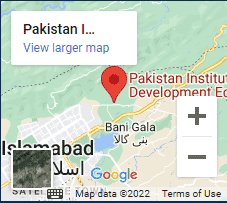
Pakistan Institute of Development Economics
- Home
Our Portals
MenuMenuMenuMenuMenuMenuMenu - ResearchMenuMenuMenuMenuMenuMenuMenu
- Discourse
- The PDR
- Our Researchers
- Academics
- Degree Verification
- Thesis Portal
- Our Portals
THE PAKISTAN DEVELOPMENT REVIEW
Simulation Model for Distributions of Crop Yields Based on Farmer Perception-A Case Study from Highland Balochistan, Pakistan
Balochistan is a vast, arid rugged, sunbaked stretch of larid with multicoloured mountain ranges and green juniper valleys. This is the largest province of Pakistan in terms of area and the smallest in terms of population. Seventy-five percent of its population earn their livelihood from agriculture and livestock. The farmers are very poor and the literacy rate in Balochistan is the lowest, only 10.06 percent and in the case of the rural areas it is further decreased to 5.61 percent. Only 35 percent of the cultivated area is irrigated [Government of Balochistan (1991»). Balochistan has an arid or semi-arid climate with annual precipitation varying from 50 mm in the West and over 400 mm in the East. The rainfall distribution pattern is erratic with extremely high and low temperatures [Kidd et al. (1988»). In such a harsh and unpredictable environment and with a very low literacy rate amongst the farmers, it is very difficult and expensive to get and generate timeseries information from farmers on the distribution of field crops. Information on yield of field crops of a specific area is vital for planning and development of that area/location. The usual approach of analysing yield distributions demand an extensive data base. There is a need to provide a way to generate estimates of crop yield distributions (over time) based on farmer interviews at any particUlar location or area. There should be a rapid, inexpensive and objective way to measure yield gaps between the potentials (from growth model) and farmers experience. Area with large gaps can, therefore, be identified without long running trials.


